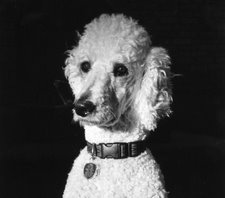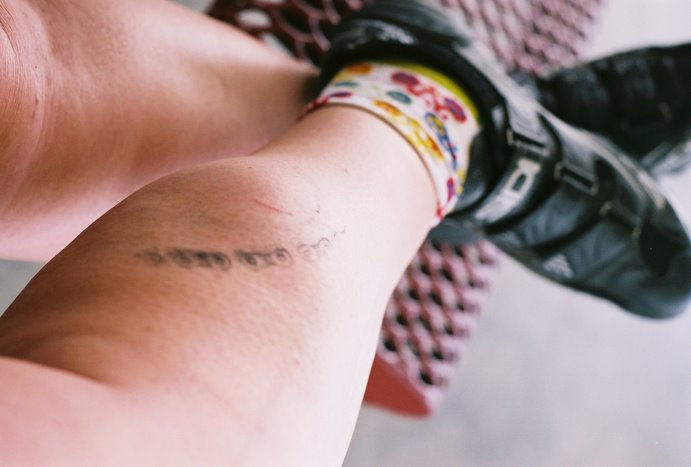SMeLLs liKe ShEeP
Almost every time I say I have absolutely no interest in doing THAT (fill in the blank with developing film, printing photos, beekeeping, weaving . . .), next thing I know I'm doing that very thing. And the thing that I'm doing now is preparing raw fleece (sheep "fur" to the uninitiated) for spinning into yarn.
I said I would rather spend the precious little free time I have spinning or knitting or cleaning house than washing barnyard stuff out of fleece but somehow during the workshop I attended over the weekend, an overwhelming need to "do" a fleece took root. I walked by the bags of fleece several times and snorted derisively to myself. I bought some of the lovely stuff that was washed and carded and completely ready for spinning pleasure, thinking that I'd have to be some kind of nut soup to haul the barnyard stuff home. I these other people wanted to do that, goody for them--not for me though.
One one of several trips by the bags o' wool, some beautifully prepared (or it may have been just washed and not carded) dark brown, almost black, wool-- a rambouillet/teeswater cross caught my eye. Before I could make up my mind about how much I needed (oh yes, I do mean need), someone else bought all, all, ALL of it.
I then did the thing that I've convinced myself any sane person would do . . . I plunged my hand into the bag of raw fleece and asked, how much? I bought only a pound of it, because I've never washed a fleece and kind of needed to start small. Then, I bought two pounds of a white rambouillet/teeswater, just 'cause. And, here I am, anxious to wash, card, spin, and otherwise fondle my fleece.
Here I'll document the method I used to process the fleece. I regret not photographing the stuff before I started, so no before photos--here goes:
COLD WATER BATH--According to THE Judith (whom spinners will know is Judith MacKenzie) in an article published in the Fall 2008 issue of Spin Off magazine, a cold water soak for a few days will dissolve the suint (sheep sweat) from the fleece.

I bought a 5 gallon "Homer" pail for each pound of fleece. I'm told this is an unpleasantly odoriferous process, so I bought lids too. On Tuesday at about noon, I raced home for lunch to fill each pail with lukewarm-ish water, plunged a pound of fleece in and hammered on the lid.
After dinner on Friday, I opened the lids, lifted out the fiber and poured the yucky water on the flower bed.
 Wet fiber, looking for love.
Wet fiber, looking for love. HOT WATER BATH-- According to everything I read, and the instructions provided to me by my friend, Karin, a really hot bath and Dawn dishwashing liquid is needed to remove lanolin from the wool.
Some folks suggest filling a clothes washer, letting the wool soak there without agitation, and using the spin cycle to dry the wool. I have a front-loading washer that is not too cooperative for such uses, so that won't work for me. I could take the wool over to my parents' house, but I personally do not think it is a good idea to run a bunch of dishwashing soap through the washer pump. It may be the suds that are harmful to the pump, but I recall a L o n g lecture for using dishwashing soap in the washer--it was probably the suds--most definitely the suds--LOTS of them.
Anyway, some folks suggest using a bathtub. I do have a bathtub. I also have bad knees and would rather not stoop or kneel more than I have to. So I used the kitchen sink, like Karin suggested.
I got the water as hot as I could from the tap, added about 1/2 cup of Dawn (original, not fancy smelling kind) added some boiling water to raise the temp some, whooshed the Dawn in the water, but not enough to make suds, and added the wool. I put the wool in large-ish lingerie bags bought for the purpose to make the task of getting the wool out of the water easier.
 Lanolin is waxy but dissolves in hot water, and will reconstitute and adhere to the wool in a way that I understand is practically impossible to remove. So, although the wool has to soak for a bit, the water cannot cool too much. And, you are not supposed to add water because that will agitate the fibers and may cause them to felt, which is not a goal here.
Lanolin is waxy but dissolves in hot water, and will reconstitute and adhere to the wool in a way that I understand is practically impossible to remove. So, although the wool has to soak for a bit, the water cannot cool too much. And, you are not supposed to add water because that will agitate the fibers and may cause them to felt, which is not a goal here.I let the fleece sit in the soapy water for about 20 minutes, drained the sink, moved the drippy bag of wool, refilled the sink with hot water and Dawn, and let the wool soak for another 20 minutes. Then I repeated the process with just hot water to rinse out the soap.
DRYING THE FLEECE --I can't use my washer to spin the excess water out of the washed fleece because the washer ads water to the tub and I don't want to chance felting the wool. So, I bought a salad spinner to s
 pin the water from the wool. I think salad spinners are an example of ridiculous excess and would not otherwise have one, but it was a fine tool for this task.
pin the water from the wool. I think salad spinners are an example of ridiculous excess and would not otherwise have one, but it was a fine tool for this task.After the salad spinner treatment, I placed the wool on a big drying screen to air dry. Oh wait, I don't have a drying screen. Sooooo, while the first batch of wool was soaking, I put my fine carpentry skills to work and built one.

 Yes, you do detect sarcasm, and yes that screw went in crooked, and no I did not take it out and start again.
Yes, you do detect sarcasm, and yes that screw went in crooked, and no I did not take it out and start again.I'm thinking that in addition to drying fleeces, the screen will be handy for lots of other stuff--B&W photo prints, dyed yarn, handwashed sweaters, etc.
I propped the new screen up on some extra laundry baskets and turned on a fan to circulate the air.


WHAT TO DO WITH A CLEAN FLEECE-- Aside from eventually spinning it into yarn, I haven't decided exactly what to do with mine. I could use my handy-dandy drum carder to blend the dark wool with the light wool, or I could dye the light wool, or I could blend the wools with some silk or some other fiber, or I could just card the wools as they are and spin them in their natural color.
That's too much decision-making for right now. So, the clean and dry wool will go into a storage tub with a lavender sachet and I'll think on it a while.
WILL I BUY RAW FLEECE AGAIN? Oh, hell yeah.
WHAT WOULD I DO DIFFERENTLY? Buy more than 3 pounds, certainly. But NOT process that much at once--or maybe start earlier in the evening.







